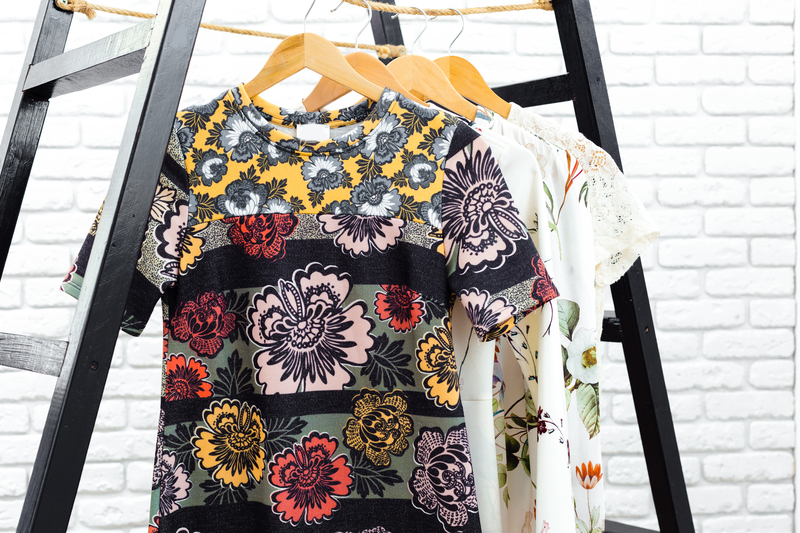Exploring What a Mini Skip Entails
Looking to make waste removal more manageable and efficient? One versatile solution is the mini skip. This article provides an in-depth exploration of what a mini skip entails, discussing its sizes, uses, key benefits, and important factors to consider. If you're renovating, clearing a garden, or simply tidying up, understanding how a mini skip can simplify waste disposal is crucial. Read on to discover if a mini skip hire is the right answer for your needs.

What is a Mini Skip?
A mini skip is a compact, easy-to-handle waste container designed for smaller clean-up projects. Typically available in two sizes--2 cubic yards or 3 cubic yards--mini skips are ideal for disposing of household, garden, or DIY waste without taking up much space.
- Size: Mini skips range from 2 to 3 cubic yards in capacity, holding about 20-35 black bin bags.
- Material: Constructed from durable steel, ensuring longevity and resistance to corrosion.
- Design: Features low sides for easy loading and placement in restricted spaces.
In summary, a mini skip is a small, robust waste container that's perfect for domestic projects and tidy-ups where space and waste quantities are limited.
How Does a Mini Skip Differ From Other Skips?
While skips come in an array of sizes, the mini skip is distinguished by its compactness. What sets it apart?
- Footprint: Significantly smaller, fitting on most driveways and without obstructing access.
- Cost: Generally cheaper to hire due to its reduced size.
- Suitability: Designed for low-volume waste management, unlike builders' skips or maxi skips used for large projects.
Mini skips bridge the gap between regular bin collections and large skip hires, making clutter control accessible for everyone.
Common Uses of Mini Skips
Mini skips are an excellent choice for a range of common waste removal projects. Here are some of the most popular scenarios where mini skips excel:
- Home Renovations: Perfect for small kitchens, bathrooms, or bedroom renovations, accommodating old fittings, tiles, and plasterboard with ease.
- Garden Landscaping: Dispose of green waste such as branches, soil, leaves, or turf--ideal for pruning, lawn renewal, or replanting jobs.
- Garage and Shed Clear-Outs: Removing accumulated clutter, old tools, or boxes from garages and sheds is straightforward with a mini skip.
- DIY Projects: Any home improvement, from updating wallpaper to small carpentry tasks, benefits from having a convenient waste container nearby.
- Spring Cleaning: Tidy up unwanted household items or broken goods as part of an annual decluttering.
Mini skip hire isn't limited to residential use. Small businesses, shops, and offices can also benefit from a mini skip when refitting premises or clearing archives.
Mini Skip Dimensions and Capacities
Understanding the actual size and load of a mini skip is vital for ensuring it fits your requirements.
- 2-Yard Mini Skip: Typically measures about 1.2m long x 0.9m wide x 0.76m high, holding up to 20-25 bin bags.
- 3-Yard Mini Skip: Around 1.6m long x 1m wide x 0.96m high, accommodating 30-35 black rubbish bags or similar volume of loose waste.
These volumes make mini skips a highly practical solution for situations where large skips would be excessive or impractical.
What Can You Put in a Mini Skip?
A common question is, what kinds of waste are suitable for mini skip disposal? Most non-hazardous materials generated from homes or gardens are acceptable, including:
- General household waste
- Furniture (broken chairs, tables, shelving)
- Garden waste (soil, clippings, leaves, turf)
- DIY materials (tiles, bricks, ceramics, timber--though in limited amounts)
- Metal, plastics, and packaging
Always check with your skip hire provider for any specific restrictions, as items such as electrical goods, hazardous chemicals, tyres, or asbestos are generally not accepted and require specialised disposal.
Prohibited Items in Mini Skips
- Batteries
- Fridges/freezers
- Paint and solvents
- Gas cylinders
- Medical waste
- Plasterboard (in some areas or only in small quantities)
Disposing of these can result in additional fees or refusal to collect the skip, so always clarify what is allowed.
Key Benefits of Using a Mini Skip
Why should you consider mini skip hire for your next clean-up? There are numerous advantages to opting for a mini skip over other disposal methods:
- Convenience: Delivered and collected at your chosen address, saving trips to the local tip and avoiding mess in your vehicle.
- Affordability: Lower hire fees than bigger skips and no hidden charges if used correctly.
- Time-Saving: Fill the skip in your own time--most hire periods are 7 days, with options for extensions.
- Environmental Benefits: Reputable skip companies sort and recycle most waste, reducing landfill and supporting sustainability.
- Versatility: Portable enough for tight spaces but big enough for substantial waste volumes.
- Reduced Clutter: Keeps workspaces and gardens neat and safe throughout your project.
Ultimately, a mini skip provides an efficient, eco-friendly, and cost-effective way to manage waste for small-scale tasks.
Where Can You Place a Mini Skip?
One advantage of mini skips is their flexibility in placement. Thanks to their small footprint, you have several options:
- Driveways or Private Land: Ideal as no special permit is usually required, and access is easy for loading.
- Front Gardens or Yards: Small size allows placement on lawns, gravel, or hardstanding areas.
- On the Street: In certain circumstances, mini skips can be placed on public roads, but a council permit may be required.
- At Business Premises: Mini skips suit shopfronts or car parks for quick, temporary waste solutions.
Before hiring, always check site suitability and access. Skip trucks need to deliver and collect the bin, so adequate clearance is essential.
Do You Need a Permit for a Mini Skip?
If you intend to put the skip on public property--such as a road or pavement--local authorities require a skip permit. For skips placed on your driveway or private land, no permit is usually necessary. Permit fees and processing times vary by council.
How to Choose the Right Mini Skip for Your Needs
With more people turning to mini skip hire for small projects, selecting the right skip is vital. Consider the following when deciding:
- Waste Volume: Estimate the amount of material. Overfilling is not permitted, so opt for a slightly larger skip if uncertain.
- Type of Waste: Some skips have restrictions (e.g., plasterboard or soil-only skips). Clarify intended waste types with your hire provider.
- Site Access: Will the driver have enough space to deliver and collect the skip?
- Duration: Most companies offer flexible rental periods--comparing these can save you money.
Tip: If between sizes, it's safer to choose the bigger mini skip to avoid additional collections or overload charges.
Tips for Maximising Mini Skip Space
To get the best value from your mini skip, pack waste efficiently:
- Break Down Bulky Items: Dismantle old furniture and crush cardboard boxes before loading.
- Flat Items First: Lay flat objects (like boards or doors) along the bottom.
- Fill Gaps: Use small items or bags to fill voids and stack efficiently.
- Distribute Weight Evenly: Keep the load stable for safer pick-up and transport.
- Do Not Overload: Waste must not exceed the "fill line" marked on the skip for legal and safety reasons.
Mini Skip Hire Process Explained
Wondering how to hire a mini skip? Here's a simple step-by-step overview:
- Choose Skip Size: Decide between a 2-yard or 3-yard mini skip based on your needs.
- Check Placement: Determine where the skip will go and ensure access is clear.
- Book Online or by Phone: Many providers now offer quick online bookings with instant quotes.
- Arrange Delivery: Select your preferred date; skips are often delivered the next day.
- Fill the Skip: Dispose of all permitted waste, sticking to the fill-level guidelines.
- Collection: Arrange for prompt pick-up, and the waste will be sorted and recycled where possible.
Modern skip hire is convenient, with many companies offering flexible rental, same-day delivery, and online tracking.
Environmental Impact of Mini Skips
Many people ask: What happens to waste after collection? Mini skip waste is typically processed at authorised recycling centres, where materials like metal, plastic, wood, and green waste are sorted and recycled. Responsible hire companies aim to send as little as possible to landfill.
- Recycling: Some providers achieve recycling rates of 80% or higher, minimising environmental impact.
- Compliance: Licensed waste carriers comply with local and national regulations, offering peace of mind.
Choosing an eco-friendly mini skip provider ensures your project has a positive effect on the environment.

Frequently Asked Questions About Mini Skips
How much does a mini skip cost to hire?
Costs vary by location and duration but typically range from ?70 to ?150. Always confirm what's included (e.g., permits, VAT, collection) before booking.
How long can you keep a mini skip?
Most hire periods are for 7 days, with options to extend for a small fee.
Can you put soil and rubble in a mini skip?
Yes, but check maximum weight limits. For large amounts, a builder's skip may be more suitable.
Do you need to be present for delivery and collection?
Not generally, as long as placement is clear and accessible.
Conclusion: Is a Mini Skip Right for You?
Exploring what a mini skip entails reveals it to be an invaluable asset for homeowners, renters, and small businesses alike. Compact yet capable, a mini skip makes waste removal easy, tidy, and efficient for small to moderate projects.
If your project is larger or includes lots of bulky or specialist waste, consider larger skip sizes. But for most tidy-ups, renovations, and garden clearances, mini skips deliver unmatched value without the hassle and cost of repeated tip runs.
Ready to streamline waste disposal? Evaluate your waste volume, check local skip hire companies, and enjoy a cleaner, greener project with your own mini skip.
By exploring what a mini skip entails, you've unlocked the potential to manage waste the smart way--conveniently, affordably, and with minimal environmental impact.